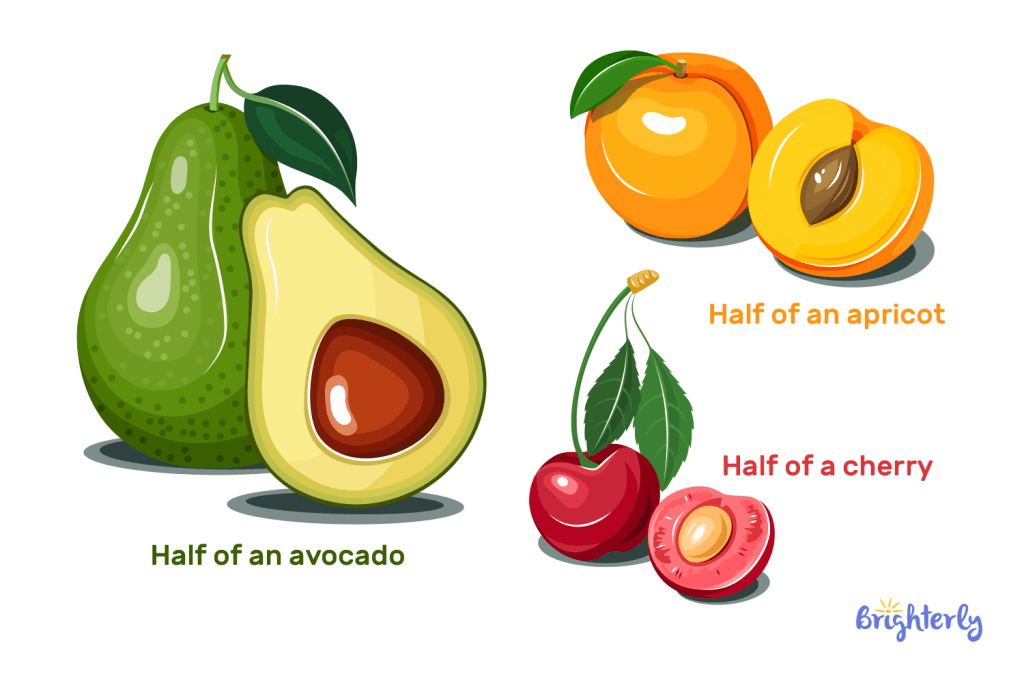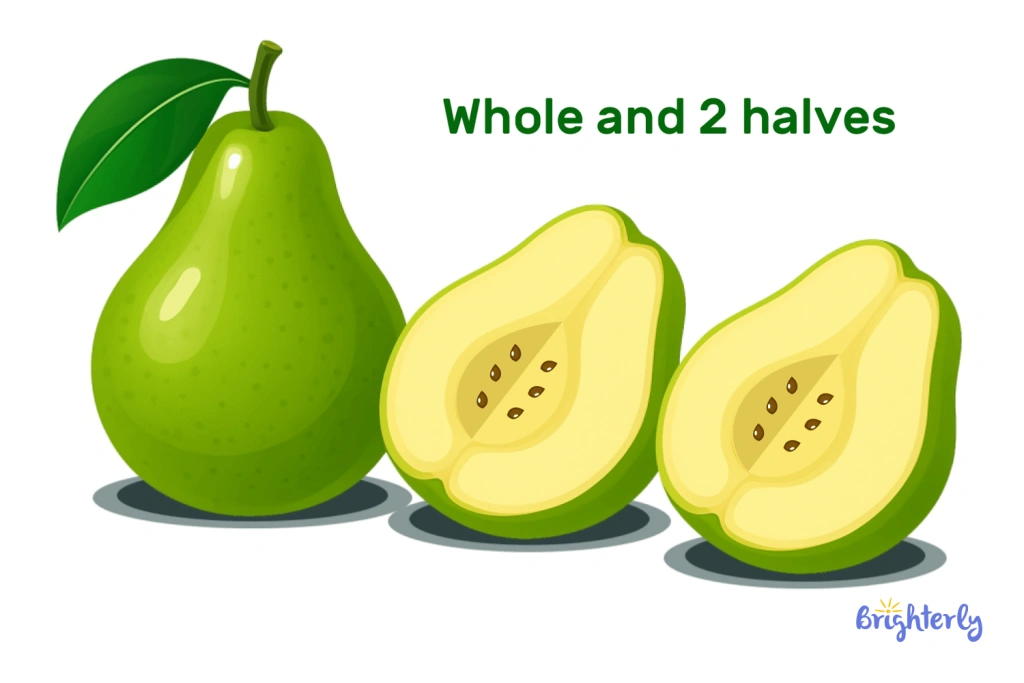Halves – Definition with Examples
Updated on November 29, 2025
When we talk about what is half of something, we mean one of two equal parts that a thing can be divided into. Learning about halves helps us see balance and share things more fairly. We are also more likely to notice patterns and connections when we look at halves. Furthermore, halves demonstrate how small parts come together to form a whole. The way halves fit and relate to one another can be better understood if you see clearly how halves work. So, let’s explore halves with Brighterly!
What is a half?
The halves meaning comes from the idea that a whole can be split into two equal parts. Each half is equal in value, and together they create something complete. By understanding halves, we can notice balance in the world and how different parts relate to one another.
Everywhere we look, we see this simple idea — in numbers, measurements, and shapes. As well as teaching us about fair sharing, halves show us how equal parts can work together. Consequently, we can see how things relate, fit together, and work together to form something larger. This math topic is also laying the foundation for understanding more complicated concepts.

Definition of halves
Halves definition refers to what we get when we take something and split it into two equal pieces. For example, four apples divided equally between two people means that each will receive 2 apples. Learn what are halves and you’ll immediately better understand the concepts of balance and fairness.
Definition of whole in relation to halves
The term ‘whole’ refers to an amount that hasn’t been divided into any smaller parts. When we talk about halves, a whole can be split into two equal parts, and each part is called a half. If you’re wondering how many halves are in a whole circle, the answer is two. When both halves are joined together, they form the full amount again.
Properties of halves
Due to the properties of halves, each half is always equal to the other half, making them easy to understand. Whenever a number, shape, or object is divided equally into two parts, we get halves. Each half equals 0.5 of the whole. When combined, the two halves equal 1 whole.
Properties of halves in relation to a whole
You can divide every whole into two halves, each half having the same size. But when we combine these 2 halves, we get a whole. This division demonstrates to us the balance and fairness.

Difference between half and whole
A whole is an entire amount that has not been divided. But when we do split it into two equal parts, we get exactly what is meant when we ask, “What is halves?”
Equations involving halves
We can take the example of 6 halves to better understand how they work. Since each whole is made up of two halves, we can group the 6 halves into sets of two. These three groups of two halves show that 6 halves are equal to 3 whole units. This example clearly shows how we can divide into two equal parts.
Writing equations with halves
If you have $5 and share it evenly with a friend, you both get $2.50 — that’s half of 5 in action. To clarify this, we have to divide 5 by 2, which brings us 2.5. Here’s another way to write this equation: 5 ÷ 2 = 2.5.
Writing equations that represent a whole
If you have 7 halves, you can show this with the equation 7 × 1/2 = 3.5. For example, imagine a pizza cut into 2 equal slices. If you collect 7 half-slices, you can group them into three full pizzas (6 halves) with 1 half-slice left over.
Conclusion
Even though a whole is divided into two equal parts, those two halves always combine to make one complete whole. Whenever you divide objects — like circles, apples, or sheets of paper — into halves, each part is fair and equal. And if you take a half of a half, you simply create a smaller equal part that still comes from the same original whole.
Frequently asked questions on halves and wholes
What is the relationship between a half and a whole?
The relation between a half and a whole is that a half is one of two equal parts of a whole. Two halves together make one whole. One-half contains one of the two equal parts. After the two halves have been combined, a whole is formed.
Can any number be divided into halves?
Yes, any number can be divided into halves. For example, half of 10 is 5, and half of 3 is 1.5 — both are fair divisions.
Are halves always fractions?
No, halves aren’t always fractions. Although they are usually written as fractions, such as 1/2, they can also be written as decimals, such as 0.5.
What’s an example of an equation with halves?
An example of an equation with halves is 1/4 + 1/4 + 1/2 = 1, where smaller parts combine to make a whole.
Why is understanding halves and wholes important in math?
Understanding halves and wholes is important in math for handling fractions, ratios, and divisions.






